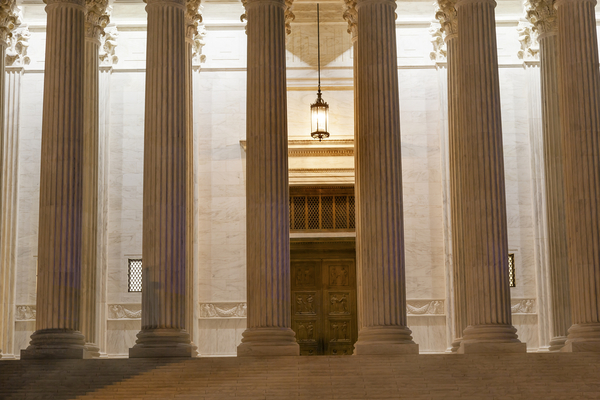With the recent retirement of Anthony Kennedy as an Associate Justice of the Supreme Court, the country is now set to go through the one of the contentious nomination processes in American history to seat his replacement.
Why is this process so heated? Has it always been this way? For decades, the Supreme Court has issued an increasing number of controversial rulings in critical areas of importance for U.S. citizens, resulting in many cases where a single justice changes the lives of millions of Americans in fundamental ways.
Examples of these types of rulings include:
- Obergefell v. Hodges, a 5-4 decision by the Court in 2015 finding that there was a fundamental right to same-sex marriage in the Constitution
- National Federation of Independent Business v. Sebelius, another 5-4 decision in 2015 that declared the individual mandate forcing people to buy health insurance in the Patient Protection and Affordable Care Act (otherwise known as Obamacare) was constitutional by declaring the mandate a legitimate exercise of the taxing power of Congress
- Planned Parenthood v. Casey, a 1992 decision by the Court that only via a plurality opinion reaffirmed the constitutional right to abortion found in the 1973 Roe v. Wade decision.
As for the second question, the answer is most emphatically that nominations have not been contentious. In fact, the confirmation battles over the last 30 years are an aberration when put into context with the rest of history of the Supreme Court nominees.
During the first 200 years of the Republic (1789–1989), there were a total of 126 nominees that obtained a vote in the Senate and the average time for the nominee to obtain this vote was slightly under 22 days with the vast majority of these nominations being so uncontentious only a voice vote was required.
However, with the nine nominations that have occurred during the subsequent 30 years (1989–2018), the average time has been over three times longer at over 68 days with more successful nominees getting less than 60% of Senate approval than occurred in the previous 150 years of Supreme Court confirmation history. (1)
It is unrealistic to expect the Court to refrain from inserting itself into areas of controversy in the future, or that Congress itself will have the political courage to take any meaningful steps to restrain the Court using its legitimate powers under the Constitution.
Therefore, the process only looks to get more and more contentious unless reforms are made through the only other constitutional vehicle available which is via amendments generated from an Article V Convention of States.
Through amendments that limit the terms of justices, or provide for a mechanism to have controversial Supreme Court rulings overturned by Congress, an Article V convention can be the solution that restores the Court and the judicial branch to the role envisioned by the Founders.
(1)https://en.wikipedia.org/wiki/List_of_nominations_to_the_Supreme_Court_of_the_United_States#endnote_recessa






